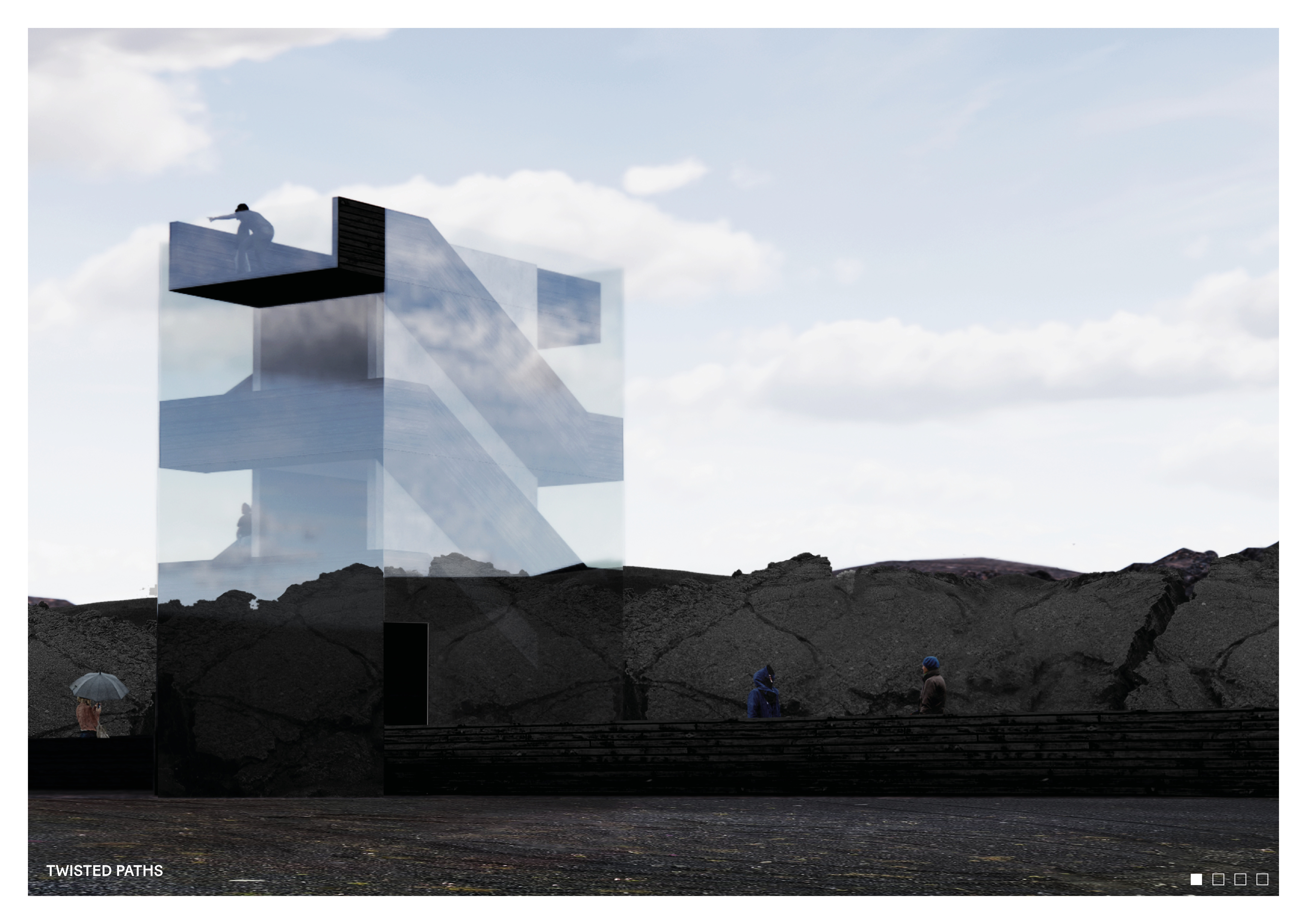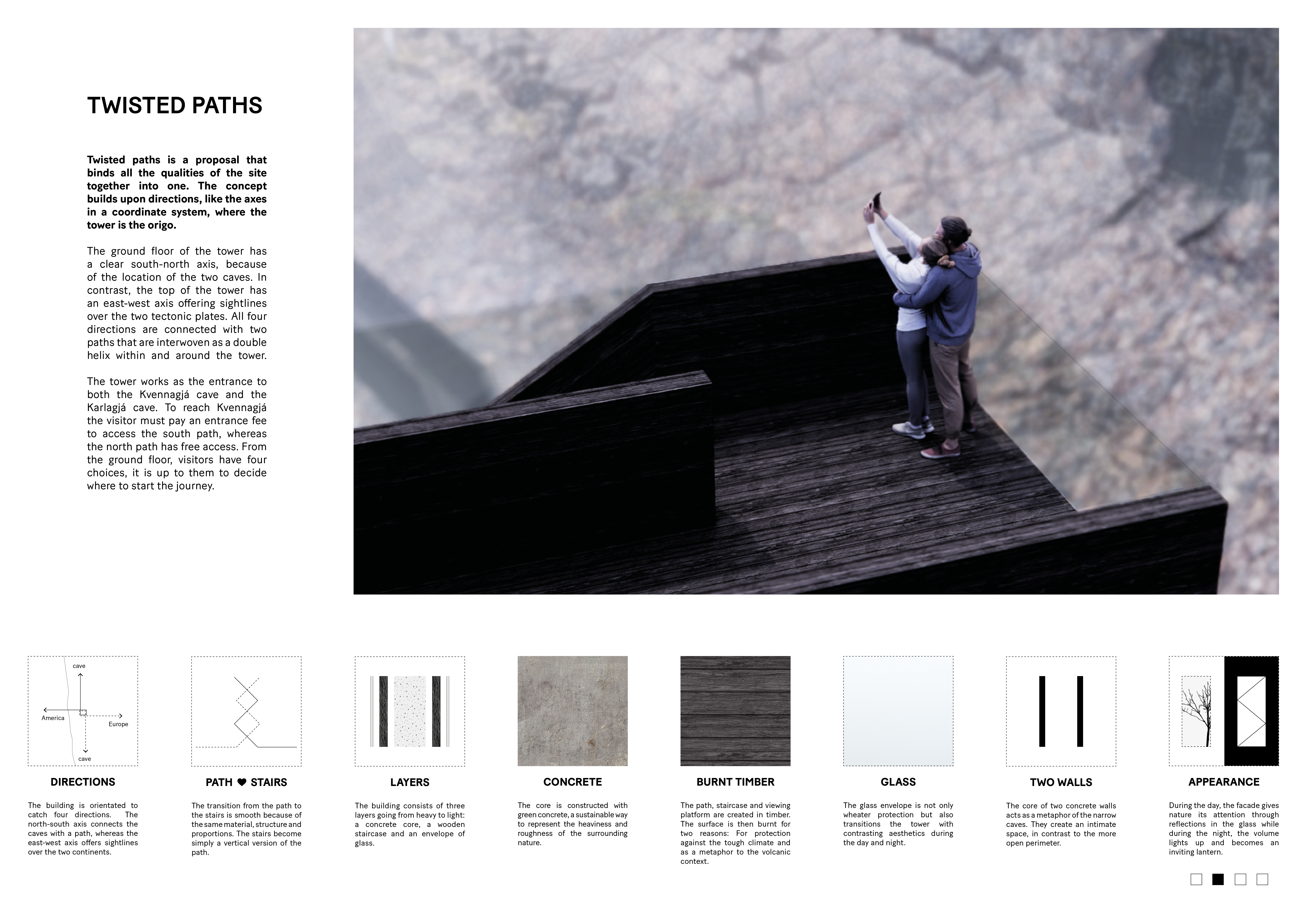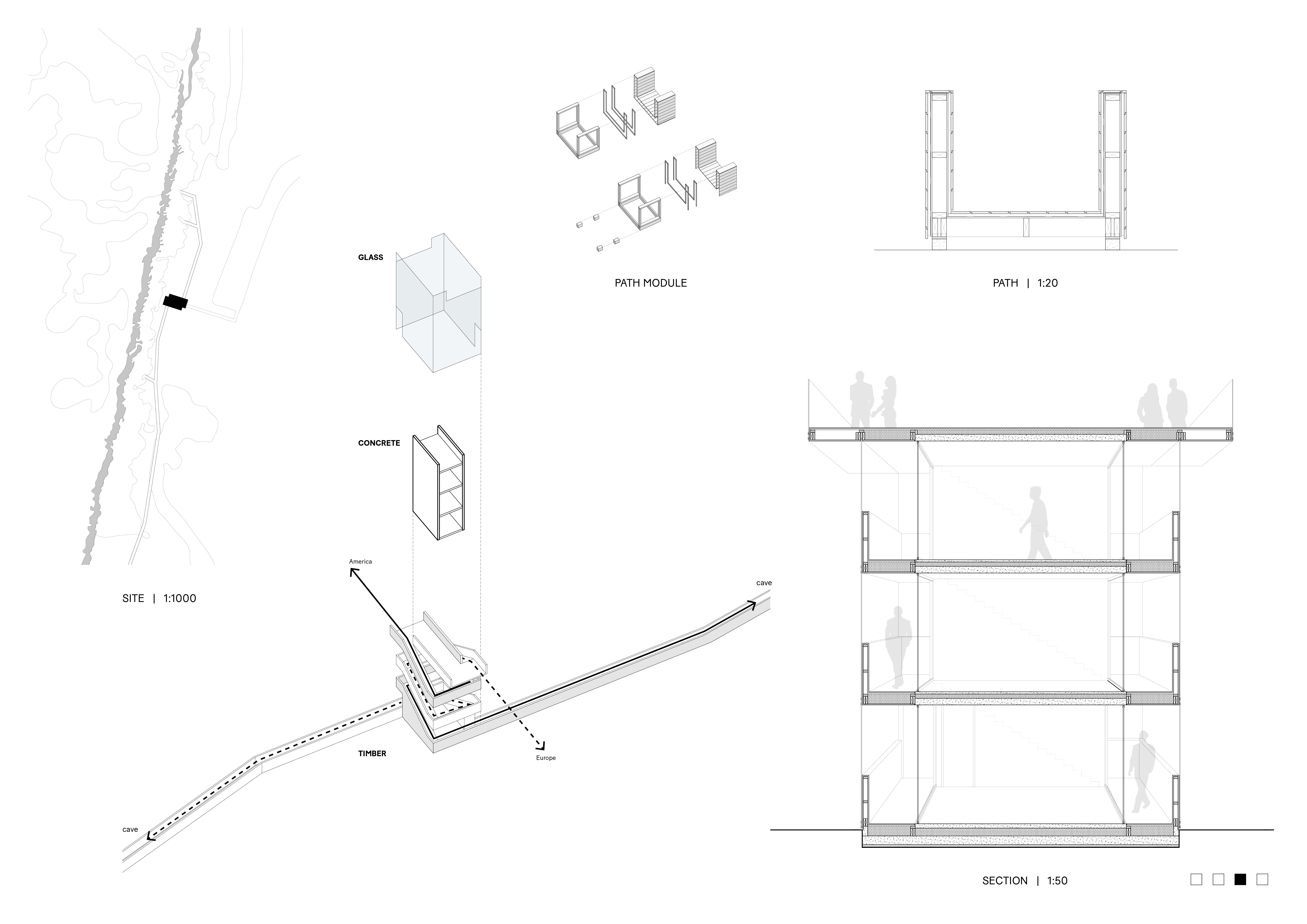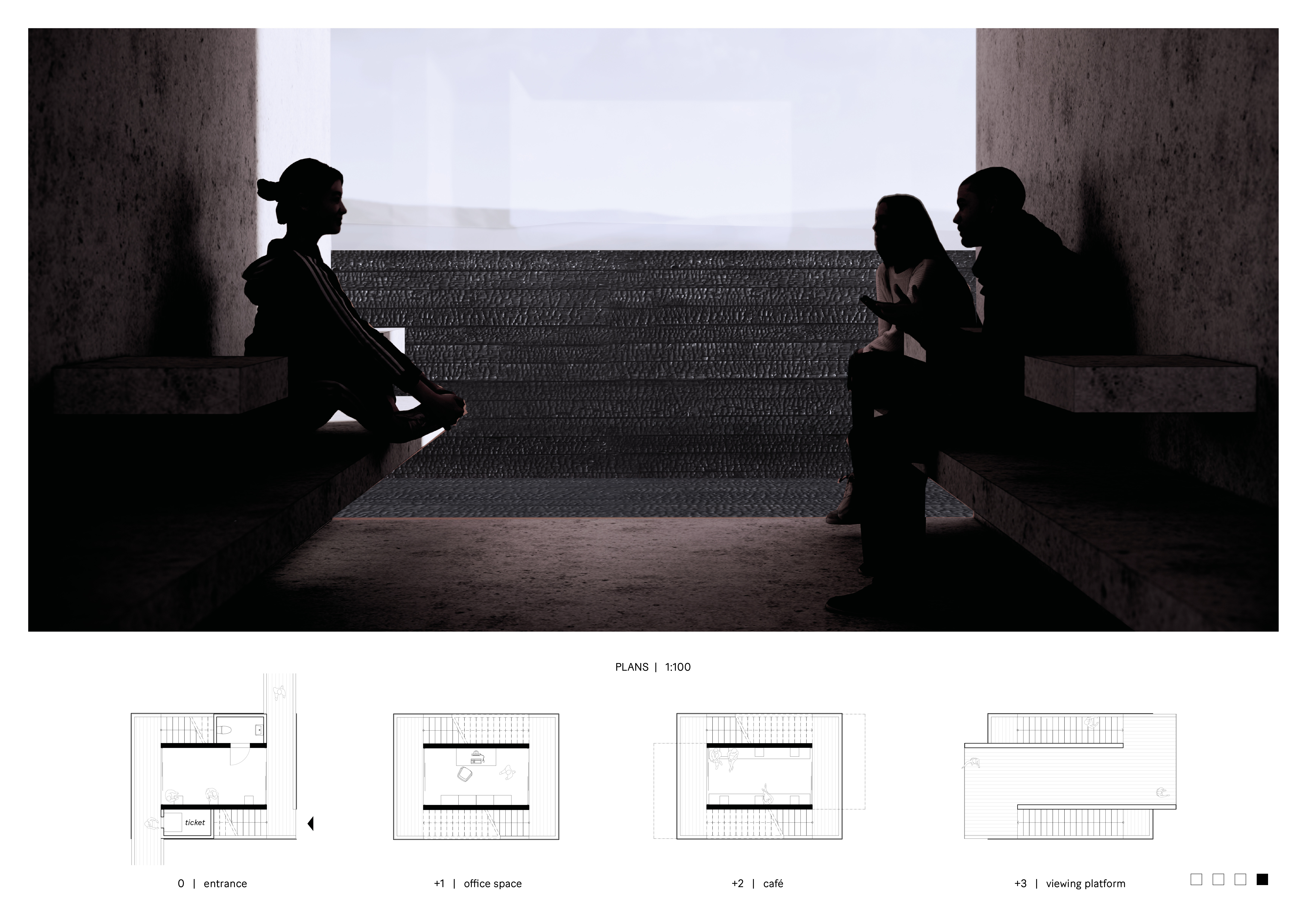5 key facts about this project
Twisted Paths is an architectural design that integrates with its geographic location, marked by the nearby Kvennagjá and Karlagjá caves. The focus of the project is a prominent tower that serves as the central point for visitors. Its overall concept emphasizes movement and connection, shaping the way people engage with the natural landscape surrounding it.
Spatial Organization
The design establishes a clear north-south axis, linking the two caves directly. Above, an east-west axis provides views of the tectonic plates in the area, enhancing the project's relationship with its setting. The pathways are arranged in a double helix, promoting exploration and offering different entry points for those who visit. This structure allows for varied experiences as users navigate the site.
Materiality and Structure
The building features three layers that transition from a solid concrete core at the bottom to lighter materials above. Green concrete is used to create a link with the natural environment while supporting sustainable practices. This choice adds a tangible quality that pairs well with the rugged terrain. The design connects horizontal pathways with vertical stairs, guiding visitors through the various levels in an intuitive manner.
Experiential Design
Inside the tower, two concrete walls represent the narrow caves, creating a close and engaging atmosphere that contrasts with the wider spaces outside. This arrangement encourages people to interact with different areas, highlighting the importance of both private and open environments. The paths are thoughtfully designed to make movement feel natural, inviting users to explore the entire structure.
Visual Dynamics
The façade of Twisted Paths interacts with the outside landscape, reflecting natural elements during the day and glowing at night. This visual change enhances the building's presence in the area, allowing it to blend in while also standing out. These characteristics showcase how the structure relates to its environment and provides a unique point of interest within the natural surroundings.






















































